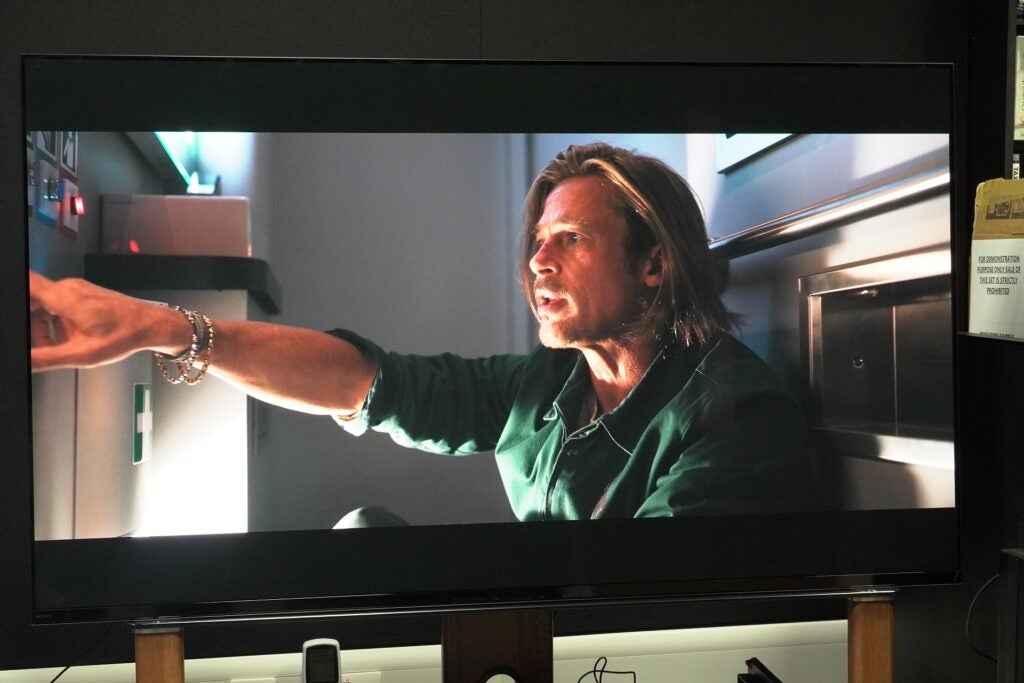OPINION: In the past few weeks, I’ve been reviewing the latest slate of TVs – but the one that has impressed me is a relative oldie.
I’m late to the A95K hype train, but having looked at this TV side-by-side with LG’s latest offering in the C3 and G3, I think QD-OLED is the successor to OLED technology.
The first QD-OLED I reviewed from Samsung in the S95B was one that I thought was very good in places – it’s better than the A95K for gaming, for instance – but the picture settings did need some tweaking to get the most from the TV.
That’s not the case with the Sony A95K.
Out of the box, the beauty and naturalism of its images, especially in 4K HDR, is outstanding. White tones are fabulously clean and pure, and while it can’t achieve the blazing brightness of the G3 OLED (which can get tremendously bright), highlights pack enough of a punch without suffering from too much clipping and looking blown out.
The range and tone of colours it can display are wide-ranging, skin tones look so much more natural than I’ve seen from previous Sony TVs; and the levels of small, fine detail the BRAVIA XR processor can dig out is impressive. I’ve mentioned the odd green tint that’s affected the samples of LG TVs I’ve reviewed – that issue is nowhere to be found with QD-OLED panels.

And the sound system packs a wallop. Sony has always been good in this regard, its Acoustic Surface Audio system that effectively vibrates the screen to produce what you hear has led the way in that department and sat side-by-side with an LG, you realise just how tame the LG OLEDs sound.
That’s not to say that the Sony A95K is perfect. As I wrote in another op-ed about a budget TV, there’s no TV out there that is, simply the one that best matches what you’re after. If you want a lot of TV and films, then the A95K is an OLED to really consider. If you’re a gamer then not so much unless you have a PS5 as Sony doesn’t seem interested in competing with the likes of Samsung, LG, or even up-and-comer TCL in that slice of the market.

Get a HomePod Mini for just £89
Apple has quietly hiked the price of its smallest smart speaker, but it looks like Currys hasn’t followed suit just yet. Head to the retailer today to get the HomePod Mini for its old £89 price instead of £99.
And for the praise I’ve lavished on the A95K, its image quality does suffer in some areas. Black levels were cited to be an issue with first-gen QD-OLEDs, and in a bright room the A95K’s blacks can look grey rather than truly black.
For an OLED it can struggle to describe low-light scenes, with a surprisingly muddiness and lack of clarity in the image. Another aspect is that with some detail – people’s faces for instance – it can smooth out all their creases, pores, etc that gives them a slightly waxy look. The design is another aspect of the A95K that doesn’t seem to have been well thought out. I have no idea where one of the HDMI ports is hiding and that enormous stand it’s attached to is not at all helpful.
So improvements can be made and that’s why I’m excited about the A95L. Much like how Samsung upgrade the S95B into the S95C, there’s the potential for a great jump in picture quality if those black levels are fixed and even greater brightness is derived from the 2nd-gen panel you could be looking at one of 2023’s most spectacular TVs. The design will be improved – thankfully moving from that stand to a pair of feet which will make adding a soundbar so much easier – and it should (hopefully) have better gaming chops with its improved Dolby Vision Gaming support.
There’s still life in OLED, but to borrow a marketing tag from Philips, QD-OLED feels like ‘OLED plus’. There’s no word on other brands joining the QD-OLED fold but it does sound as if Samsung is pitching other brands hard, so it might be just a matter of time before we start to see QD-OLED go from upstart to formidable rival in the TV market.




